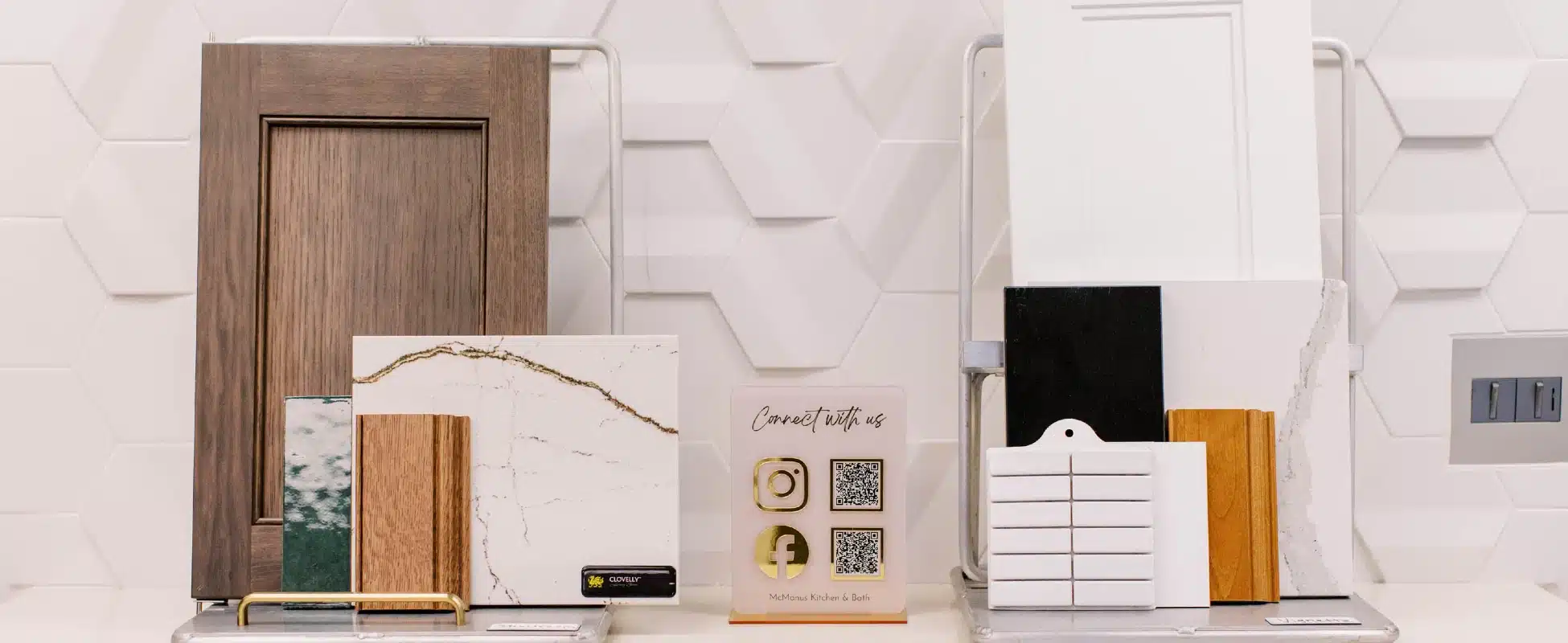
Few things are more frustrating than being in the middle of a remodeling project gone bad.
Why Remodeling Projects Go Bad
When you start a remodeling project, you’re excited and full of anticipation for the great changes coming your way.
But every year, hundreds of Tallahassee homeowners find themselves in the middle of a remodeling project gone wrong. Dismayed, upset, and concerned wondering–what happened?
Knowing why a remodeling project can go bad can help you avoid common pitfalls and ensure your project runs smoothly.
Most common complaints and frustrations:
1. Mismatched expectations about quality
– You’re expecting a Lexus but your contractor is building a Kia
– No daily quality control by a project manager or main contractor
2. Surprise Cost increases
– Change orders for “unforseen issues” that should have been forseable
– Material costs much higher than allowances
3. Project takes way longer than expected
– Not knowing who will be at your home and when
– Large gaps in the work schedule… no work happening for days
4. Messy jobsites
– Poor dust control and unsafe conditions
– Disorganized tool and material storage
– damage to other parts of the home
5. Missed Opportunities
– “I wish I had known… I would have [ insert regret]”
– Ineffective design process leads to missed opportunities
– Poor communication
It’s Simple Right? Just Don’t Hire a ‘Bad Contractor’?
You might think these things happen when someone hires a bad contractor but the reality is more complex. Most contractors mean well and they might seem like a great choice in the beginning because they are friendly and knowledgable.
The underlying issue though is most contractors lack systems , processes and support staff to provide consistent results. So some projects go well and others do not.
These issues can be hard to spot in the early stages unless you know what to look for.

There are 6 critical elements needed for a successful remodel:
1. Accurate Initial Estimates to Avoid Surprise Costs
– The labor scope of work should be very detailed and include unit costs and dimensions
– Design and project management should be included
– The material allowances should be realistic and verified with actual examples
– A basic design concept should be included
2. Design, Material Selection and Planning Process
– An electrical plan, plumbing plan, framing plan, demo plan etc.. should be included and
– All materials should be selected in design.
– A detailed project schedule should be created
3. Ordering & Material Management
– To avoid delays during construction all materails should be ordered in advance
– Materials are checked for damage and quality as they arrive
– Better contractors will have a warehouse to store them, others may ask to use your garage
4. Quality Construction
– Use of qualified installers, not low bidders or “jack of all trade” handymen.
– Quality installation materials (thinset, plywood, waterpoofing etc…)
– Materials are labelled and stored safely and jobsite kept clean
5. Project Management
– Project manager is on site every day for quality control and to review plans
– Schedules are adjusted daily and installers are kept updated
– Daily logs are done each day so you know what to expect
6. Follow Up and Warranty
– Follow up 6 month after project completion to check for touch ups
– 5 year warranty on all materials and labor
– Annual follow up during warranty period

Messy jobsites can be annoying at best but at their worst can be hazardous to you and your family.
How Can I Avoid a Project Going Bad?
So much depends on your choice of contractor!
Most remodeling projects are broken down into four main phases. If any one phase is not planned and executed well, the project is at risk for failure.
Understanding these phases and asking your contractor about how he runs each one is key to making sure things will go well.
In The Estimate Phase:
If there is any time a contractor should be at his best, it’s during the estimate phase. First impressions matter, and if your contractor makes a bad one, that’s a red flag.
Many contractors are a “one-man show,” and don’t have time to answer the phone, return messages, or schedule appointments.
If you catch them at a slow time, your project could go really well. But if and when they get busy, the project can quickly fall apart as they don’t have the support staff to deal with it.
Watch Out For:
- Slow communication
- Unreturned messages
- Unwillingness to schedule an appointment (“I’ll just call you when I’m on my way.”)
- Showing up late without letting you know
- Full voicemail box
Look for a contractor
- with a clear, easy-to-follow process for creating your initial estimate.
- who will review the estimate with you in person, to answer questions and make changes if needed.
- who will include actual materials in the estimate, not allowances.
- who will discuss material quality and your needs with you.
The Design Phase:
Many contractors don’t care too much about design. They prefer for things to be easy to build, and they like to reuse the same designs and the same types of materials because that’s what they know.
We think it’s best to work with a contractor who has a designer in-house, like Design-Build companies do. But at the very least, you should hire an outside designer to help you with your project.
At the end of the design process, your contractor should give you a fixed price proposal, with no allowances. Every material should be selected and priced–no budgetary surprises!
The design work should include a 3D rendering of the project, as well as working drawings like a demo plan, an electrical plan, a plumbing plan, etc. Everything that is going to be done should be clear from the outset.
The Pre-Construction Phase
This is an important part of your home remodel that is often overlooked. During the pre-construction phase, all materials are ordered and all permits are submitted. This is when the prep work for your project ramps up.
- The pre-construction period dates should be clear. You should have an exact start date. Don’t let your contractor “call you when everything is in.” You should set the start date with your contractor at the end of the design period when you sign the fixed price proposal and approve the plans, materials, and scope of work.
- This is a waiting period. But your contractor should be sending you regular updates as materials arrive, plans and permits are approved, etc. The contractor should not go into radio silence during this time, but should be actively communicating with you.
- Your contractor should schedule a pre-construction meeting about two weeks before the project’s start date. This is when he will review job site setup with you, schedule the work for the first week, and make sure you know what to expect.
The Construction Phase
It’s important that the contractor is visiting the job site every day. Some contractors leave their subs to make decisions and do the work–this is a mistake.
Make sure your contractor or their project manager is on-site every day, making sure that the job site stays clean, that everything is being built to plan, and that any questions you or the subcontractors have are being answered.
Your designer should also visit the job site on important days like when the cabinets are going in, or when tile with a complex design is being installed.
You should not have to deal with subcontractors. You should communicate with the contractor or project manager, and they should take care of everything else.
There should be a detailed project schedule either posted on-site, or in a project management software you can access.
The schedule should be updated regularly, so you know what to expect.
Change orders do happen, but they should always be written up, and approved by you before any changes are made.
Your contractor should write up daily logs with progress photos and email them to you as well.
Bonus Phase: The Warranty/Follow-Up Phase
Once your project is done, the very best contractors provide a good warranty and have a follow-up process. They should check in with you after a few months to make sure things are going well, and follow up with you at least annually during the warranty period.

Even well done estimates can be confusing. Better contractors will review the estimate with you in person to make sure you understand everything and so you can ask questions.
I got a good referral, why Is this happening to me?
Especially confusing is when you have gotten a recommendation for a contractor from a friend whose project went great. Yet your remodeling project is turning out to be a nightmare.
Is it just bad luck or is there something wrong with you?
There are really two reasons this happens: 1. You have higher standards than your friend and 2. The contractor got lucky on your friends project and your experience is more typical.
You Have Higher Standards
Every homeowner has different standards and some people are OK with messy jobsites or people coming and going without notice etc… Other people need better communication and service and have higher expectation of the qualtiy of worksmanship.
Your Friend Got Lucky On Her Remodeling Project
More likely though is your friend got lucky. This is more common than most people realize and stems from the fact that many contractors lack the staff or systems to provide a consisent experience from project to project.
Some jobs go well because they get lucky and nothing unexpected happened. Other projects go poorly because of one the 5 reasons mentioned above.
Think of it this way
Imagine you were responsible for putting on events every month at a local park. If you never checked the weather ahead of time or made sure the park was available for your event, you’d have some great events–when weather and crowds happened to be on your side–and some bad ones, with stormy weather and no space for your event. It would be the luck of the draw. This is what happens when contractors have poor systems or support staff.
The difference is with remodeling projects there are dozens of things to check and plan for to ensure a success.
You need more than referrals
Referrals are a great way to start your contractor search but it’s important to go deeper than that to choose the best contractor for your project.
To Sum Up, There are 5 main reasons remodeling projects go wrong:
1. choosing the Wrong Contractor
Choosing a contractor based only on price or working with a contractor who does not specialize in the kind of work you want done.
2. Inacurrate Estimates
Most remodeling estimates don’t do a good job of explaining what is included and what is not in detail. They also usually underprice fixtures and materials. This leads to surprise costs (and arguments) later on.
3. Poor Design Work
A lot of contractros rely on minimal design work and prefer to “figure it out” on the job. This creates delays, mistakes and missed opportunities.
4. poor Communication and Follow Up
It is extremely frustrating to not hear back from your contractor, not know when work will be done or who will be working at your house and when. A big red flag is delayed reponses to emails or calls during the estimate and design process.
5. poor Planning and Scheduling
Many contractors are too optimistic with their timelines and they don’t have writteen schedules to go by.
